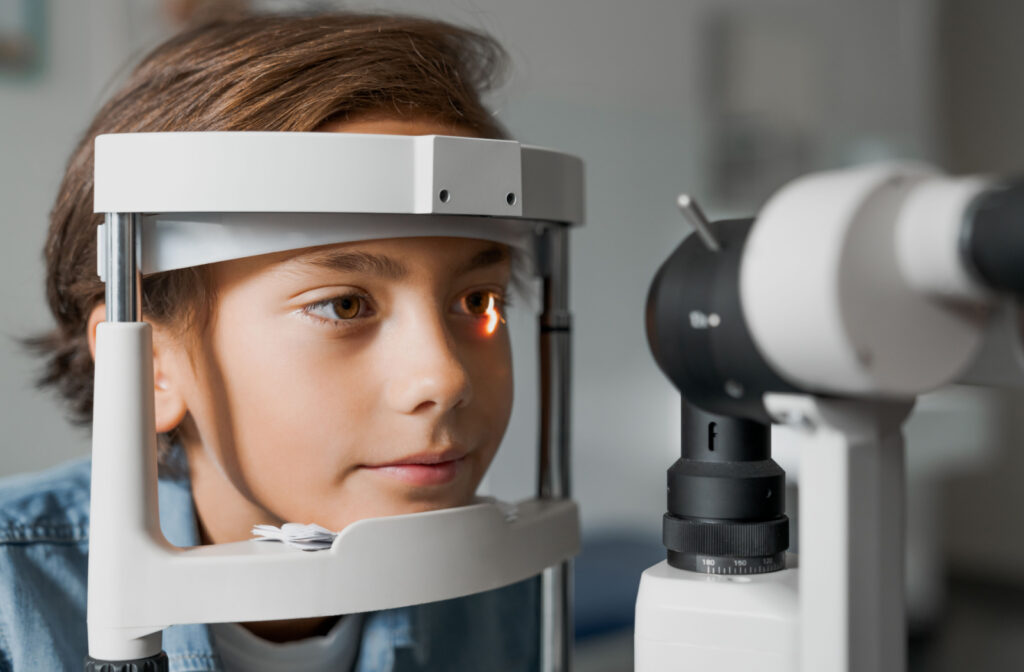All Categories
Featured
Table of Contents

Routine eye assessments are essential for keeping good vision and detecting potential eye health and wellness concerns early. Nevertheless, the frequency of these exams can vary substantially based upon a person's age, way of living, and overall health and wellness. Understanding the recommended schedule for eye tests can help make sure that individuals of every ages get ideal care and surveillance for their eye wellness.
Newborns and Toddlers (0-2 Years)
For kids and babies, eye examinations are crucial for identifying any type of prospective vision problems early. The American Academy of Ophthalmology recommends that a youngster's very first eye exam need to occur at around 6 months old. During this initial visit, the eye treatment specialist will analyze the youngster's aesthetic growth and check for any type of apparent eye issues.Following this very first examination, it is suggested that kids have an additional eye test at age 3. This check out will concentrate on assessing the child's general visual function, consisting of eye placement and the ability to track things. If no problems are found, the following exam must be scheduled before the child begins college, typically around age five or 6.
School-Aged Youngsters (6-18 Years)
Routine eye examinations need to be scheduled every one to two years as soon as kids get to institution age. Vision is essential for finding out and development, and several colleges perform vision screenings. Nonetheless, these screenings do not replace a detailed eye exam by an eye care professional.For youngsters entailed in sporting activities or activities needing considerable visual emphasis, yearly eye exams might be a good idea. Furthermore, if a kid exhibits indications of vision problems-- such as trouble reading, scrunching up your eyes, or frequent migraines-- a browse through to the eye doctor ought to be arranged as soon as possible.
Young Grownups (19-39 Years)
Youthful adults usually have fewer vision modifications than older age teams, but routine eye tests remain essential. The basic recommendation is to schedule an eye examination every 2 years throughout this period. Nonetheless, people with specific danger factors-- such as a family background of eye illness, diabetes mellitus, or those that use get in touch with lenses-- ought to think about yearly eye tests.Additionally, those who spend considerable time on electronic tools may experience digital eye strain. If signs and symptoms such as dryness, exhaustion, or obscured vision take place, it might be a good idea to see an eye care professional earlier.
Grownups (40-64 Years)
Adults aged 40 to 64 must set up eye tests every one to two years. Eye exams can likewise help discover other typical age-related conditions such as glaucoma, cataracts, and macular deterioration.If people in this age group have risk aspects such as high blood stress or diabetes mellitus, they might call for even more regular evaluations to monitor their eye health and wellness very closely.
Elders (65 Years and Older)
For senior citizens, normal eye tests end up being much more essential. The American Optometric Association suggests that individuals aged 65 and older have an eye exam at the very least yearly. Older adults go to a greater danger for various eye diseases, consisting of cataracts, glaucoma, and age-related macular deterioration. Early discovery and treatment of these conditions can protect against vision loss and boost the high quality of life.Final thought.
Comprehending the ideal schedule for eye exams based on age is essential for preserving ideal eye wellness throughout life. From infants to senior citizens, regular eye exams play an essential role in detecting issues early and ensuring that vision stays sharp. By adhering to these guidelines and speaking with an eye treatment professional, individuals can take aggressive actions towards maintaining their vision and general health and wellness. Whether it's a child's first visit or a senior's annual check-up, prioritizing eye treatment is a financial investment in lifelong wellness.Table of Contents
Latest Posts
Selecting the Right Location: What to Take into consideration for Weddings, Seminars, and Events
Published Mar 21, 25
1 min read
Experience the Boogaloo: Dining, Drinks, & Sports at FunCity Hotel
Published Feb 04, 25
2 min read
The Boogaloo Sports Bar & Grill at FunCity Resort Hotel: Where Fun Meets Taste
Published Feb 01, 25
1 min read
More
Latest Posts
Selecting the Right Location: What to Take into consideration for Weddings, Seminars, and Events
Published Mar 21, 25
1 min read
Experience the Boogaloo: Dining, Drinks, & Sports at FunCity Hotel
Published Feb 04, 25
2 min read
The Boogaloo Sports Bar & Grill at FunCity Resort Hotel: Where Fun Meets Taste
Published Feb 01, 25
1 min read